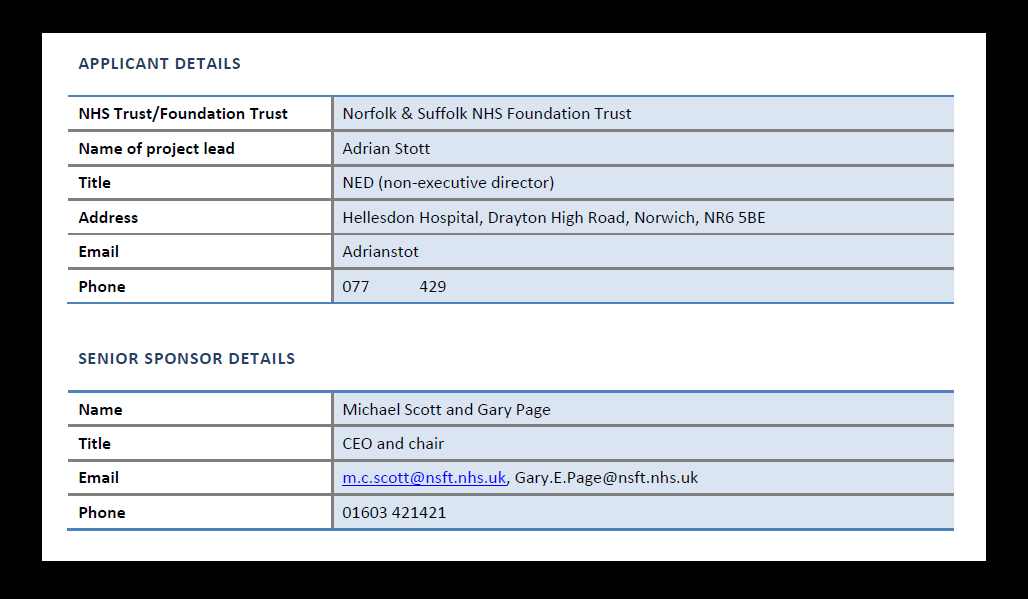1. WHAT IS YOUR UNDERSTANDING OF THE MAIN STRATEGIC CHALLENGES FACING YOUR ORGANISATION(S) AND HOW HAVE YOU ADDRESSED THESE TO DATE?
1. Challenge: Rising referrals, and falling revenues on historic block contracts, causing financial pressures.
NSFT has demonstrated strategic leadership though implementing a merger of two previous trusts in 2012, and a full redesign and transformation of its services in 2012-13. It is now developing radical new plans to again reduce costs. These include a root-and-branch review of activities which are unfunded or loss-making and exploring system-wide savings in the wider local health economies, initially through innovative joint commissioning structures.
2. Challenge: Low staff morale and engagement (e.g. NHS survey scores), and high staff sickness absence rate.
NSFT is examining the mutual model, which has been part of very high staff engagement (see e.g. Kings Fund study and NAViGO achievement), and methods used by higher-scoring peer trusts. These issues are particularly important in mental health, as the quality of staff relationships with patients can directly influence outcomes, and because staff costs are a particularly high (c.75%) part of our costs.
3. Challenge: Lack of measurement of patient outcomes achieved, and of innovation to raise patient outcomes.
NSFT is one of the UK thought leaders in the emerging field of measuring mental illness treatment outcomes, including high–level participation in UK PbR and outcomes committees, and new thinking in best practice data collection, use of alternative outcome measures, and use of outcomes in clinician appraisals. In 8/14 NSFT, very unusually, recruited a Medical Director specifically with a job specification to measure and improve our outcomes. NSFT is looking to create a much more innovative culture, potentially including using the positive impact of the mutual model.
4. Challenge: Need to win new business in an increasingly open and competitive environment.
NSFT is working to deeply understand its costs and its competitive advantages/disadvantages, in order to enable accurate and successful bid selection and pricing. Whilst private sector competition is increasingly present in many areas, for NSFT inpatient services remains an area of strong competitive advantage. Innovation is another key competitive differentiator for NSFT, with examples including integrated bidding, prevention, outcomes, mobile IAPT in library buses, use of internet therapies (cCBT, POL), and innovative schools education (Compass).


mexican online pharmacies prescription drugs: Mexican Pharmacy Online – pharmacies in mexico that ship to usa
indian pharmacies safe http://indiaph24.store/# best india pharmacy
indian pharmacy